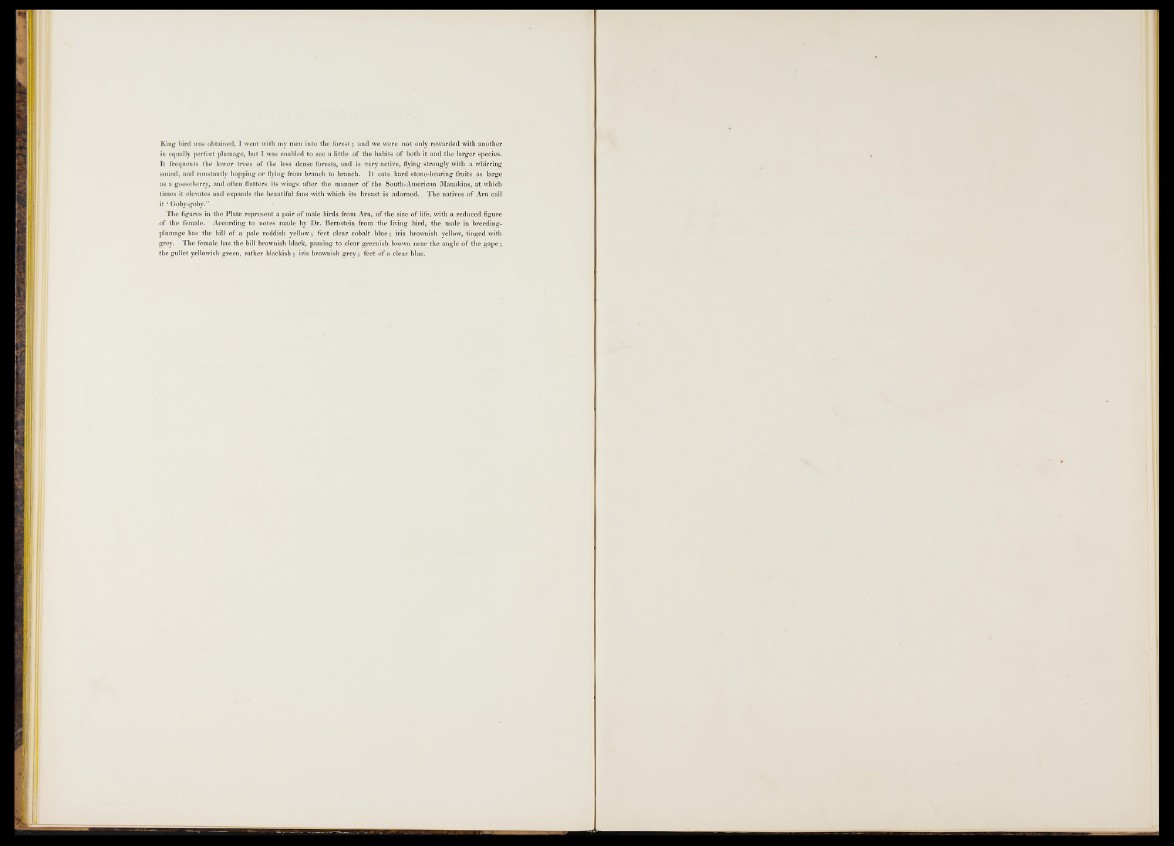
King bird was obtained, I went with my men into the forest; and we were not only rewarded with another
in equally perfect plumage, but I was enabled to see a little o f the habits o f both it and the larger species.
It frequents the lower trees o f the less dense forests, and is very active, flying strongly with a whirring
sound, and constantly hopping or flying from branch to branch. It eats hard stone-bearing fruits as large
as a gooseberry, and often flutters its wings after the manner o f the South-American Manakins, at which
times it elevates and expands the beautiful fans with which its breast is adorned. The natives o f Aru call
it ‘ Goby-goby.”
The figures in the Plate represent a pair o f male birds from Aru, o f the size o f life, with a reduced figure
of the female. According to notes made by Dr. Bernstein _from the living bird, the male in breeding-
plumage has the bill o f a pale reddish yellow; feet clear cobalt blue; iris brownish yellow, tinged with
grey. The female has the bill brownish black, passing to clear greenish brown near the angle o f the gape;
the gullet yellowish green, rather blackish ; iris brownish g rey; feet o f a clear blue.